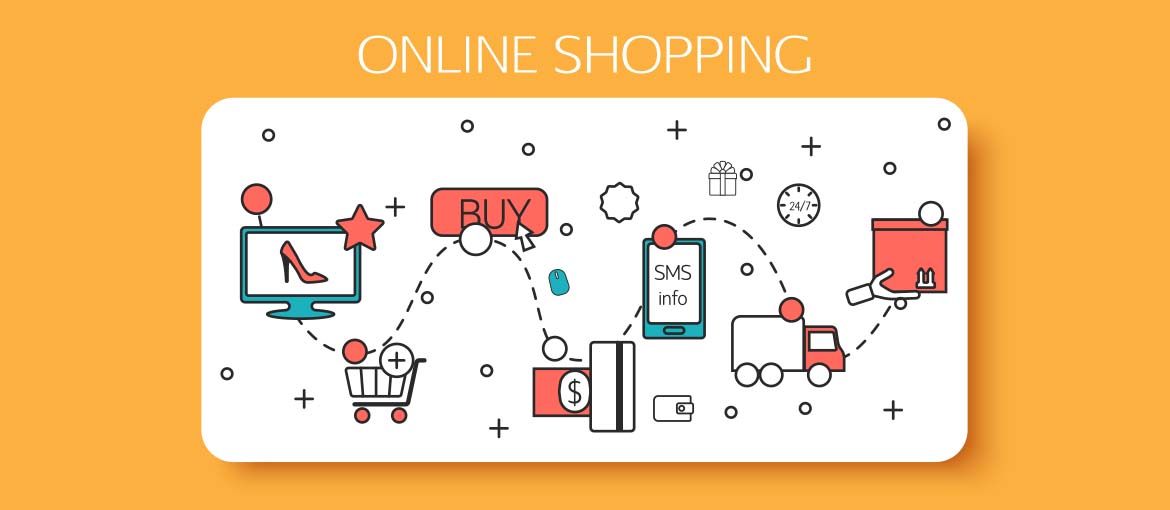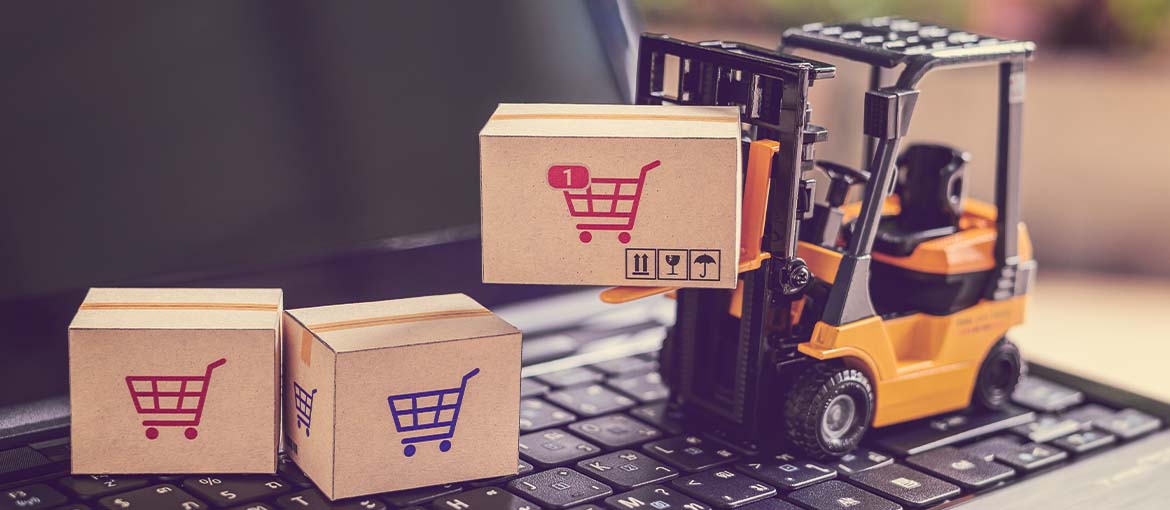Table of Contents
There is one type of retail that, in spite of the recent difficulties, has not been plunged into crisis – indeed, in the first quarter of 2021, it grew three times more quickly than the previous year. We’re talking, of course, about electronic commerce, which many retailers have embraced more enthusiastically in recent months, in part from necessity and in part to increase their profits.
We’ve therefore decided to explore the ‘e-commerce phenomenon’ and provide a little more information for those who would like to get stuck into online retail. Let’s start with the basics…
The meaning and history of e-commerce
First things first: a definition of e-commerce. According to the Treccani online dictionary, e-commerce is “any business that involves buying and selling products and services on the internet, both conducted by traditional companies and on specialist platforms“. The small ‘e’ stands for ‘electronic’and, when combined with the word ‘commerce’, it means any online trade in goods and services.
Nowadays we take purchasing products and services online so much for granted that this definition seems a little superfluous. So it is always surprising to remember that e-commerce is actually a relatively recent innovation, which began just a few decades ago.
The early days of online retail
Essentially, there were three things that enabled the launch of online retail:
- The World Wide Web was invented in 1991.
- Not long later the first internet service providers (ISPs) came along, offering connectivity for a fee.
- People began using graphical web browsers like Netscape Navigator (one of the first) and search engines.

These developments laid the groundwork for a new form of retail, and between 1994 and 1995 the very first online shops started to appear on the web. Amazon, one of the first companies to sell products online, was founded in 1994, with the first goods available in 1995. It started out with books, but now sells virtually anything. In its first month online the company sold products to 50 US states and 45 other countries around the world.

eBay and Alibaba – two of the modern giants of online retail – followed not long afterwards.
In its thirty-year history, electronic commerce has never stopped growing, in part thanks to the increasing popularity of social networks, which have allowed businesses to interact directly with their customers, analyse purchasing behaviour and consumers’ interests and improve their product range based on the feedback they receive. Even when the economy was at its gloomiest, the statistics show that online shops continued their relentless growth.
How fast is e-commerce growing? Some data!
We perused the data in the Salesforce Shopping Index, a report that displays trends in online retail. And this is what we read:
“While 2020 saw a genuine explosion in online shopping, the first few months of 2021 seem to confirm that the pandemic and the shop closures it generated have given a further global push to the digital retail sector, one which is set to continue.”
Electronic commerce grew by 58% in the first quarter of 2021, exceeding the growth rates for 2020 and the years preceding it. The countries contributing most to this were Canada (111%), the Netherlands (108%), the UK (91%) and Italy (78%).
Now let’s take a closer look at the various types of e-commerce and how they work.
The main e-commerce models
One simple way of distinguishing between online retailers is by the type of products they sell. The options are:
- Indirect e-commerce or offline e-business: here the transaction involves a physical item, which is purchased online and sent via a courier.
- Direct e-commerce or online e-business: here the transaction involves an intangible item. No shipping is required: all you need to enjoy the product or service is a download or a code. This includes software purchases, apps, legal advice, buying public transport tickets, and so on.
Next let’s look at the various types of market that companies target. There are three major forms of electronic commerce:
- B2C (business to consumer), for example a clothing shop selling online to its customers.
- B2B (business to business).
- C2C (consumer to consumer), where people use a platform to sell products they no longer use, such as Vinted, an app used for buying and selling second-hand clothes.
Worked out the market you’re interested in? In that case, let’s look more closely at an online shop to understand how it works.
How does an online shop work?
Let’s imagine you’re exploring a B2C online store. You enter the site and find yourself confronted with a catalogue of products, divided into categories that you can select to speed up your search. You set your preferences, identify the item you are interested in and go to the product page, where you can access textual and visual content on the item. You’re convinced you want to buy it, so with a click you add it to your basket and complete the order by choosing your payment method and delivery address. The courier brings you the item a few days later.

For this process to occur, the company must obviously have its own online shop and keep its online catalogue updated; it must also manage the logistics of its warehouse, provide adequate customer service and monitor its deliveries and, if it wants to grow its business, it must also promote itself online. One of the trickiest parts of all this happens at the very beginning with the building of the website. At this stage the business must take important decisions, such as…
Choosing between e-commerce software or a proprietary site
Creating your own online shop begins with a major decision: do you rely on an e-commerce platform or create your own proprietary website? To help you decide, here are the main advantages and disadvantages of the two options.
E-commerce platforms
If you choose e-commerce platforms like Magento, Shopify or WooCommerce, you’ll be able to create your website quickly, simply and cheaply, starting from preset templates that you can then customise. Of course, you will not have that much scope to configure the website as you want it, and you will probably have to make some compromises here and there. Nevertheless, we recommend asking a programmer to help you create your online shop through these platforms, to ensure it is as efficient as possible.

Proprietary site
Professional online retail developers can design a highly personalised website tailored to your needs. The main downside here is the cost, which tends to be much higher.
Whichever path you take, it is vital that you offer your customers the best possible purchasing experience: one that is simple, transparent and secure.
What makes a good online store?
A good online shop should be optimised for search engines, so it is easy to find, and guarantee excellent performance even with high traffic, for example during a promotion.
The back end of the website must be simple to manage, so all actions can be taken quickly without constantly having to knock on the programmer’s door. Of course, it is also important that the front end is intuitive for users, to guarantee a smooth experience. The website architecture should therefore be linear and logical, designed to guide buyers through to their purchase without any obstacles.
Last but not least, the online shop must be accessible from any device, including mobiles. The latest statistics show that mobile purchases (29%) now slightly exceed purchases from desktop computers (28%).
The pros and cons of e-commerce
We have almost reached the end of our exploration of e-commerce, so let’s draw some conclusions: what are its main advantages and disadvantages? Spoiler alert: the former greatly outweigh the latter. Let’s have a look.
Advantages of e-commerce
Online retail helps businesses:
- increase their customer base, because an online shop is not limited geographically.
- increase their profits, because sales can take place 24/7.
- reduce costs: unlike a bricks-and-mortar shop, there is no rent or utility bills to pay.
- reach people interested in their business using personalised marketing campaigns, based on users’ interests and behaviour.
Unlike traditional retail, online shoppers can:
- compare many different products and choose the best in terms of quality and price.
- buy at any time and anywhere.
Disadvantages of e-commerce
You do, however, need to remember that:
- A proportion of the public still struggles to use digital technology.
- There is still some distrust of online purchases due to the sharing of sensitive data (such as credit card details).
- Some people still say ‘I want to see and touch things with my own hands before I buy them’.
It is vital to know your business and your target market inside out, so you can work out whether an online experience is strategically worthwhile and commercially viable. Our advice is to remain in the present, while always keeping an eye on the future.



